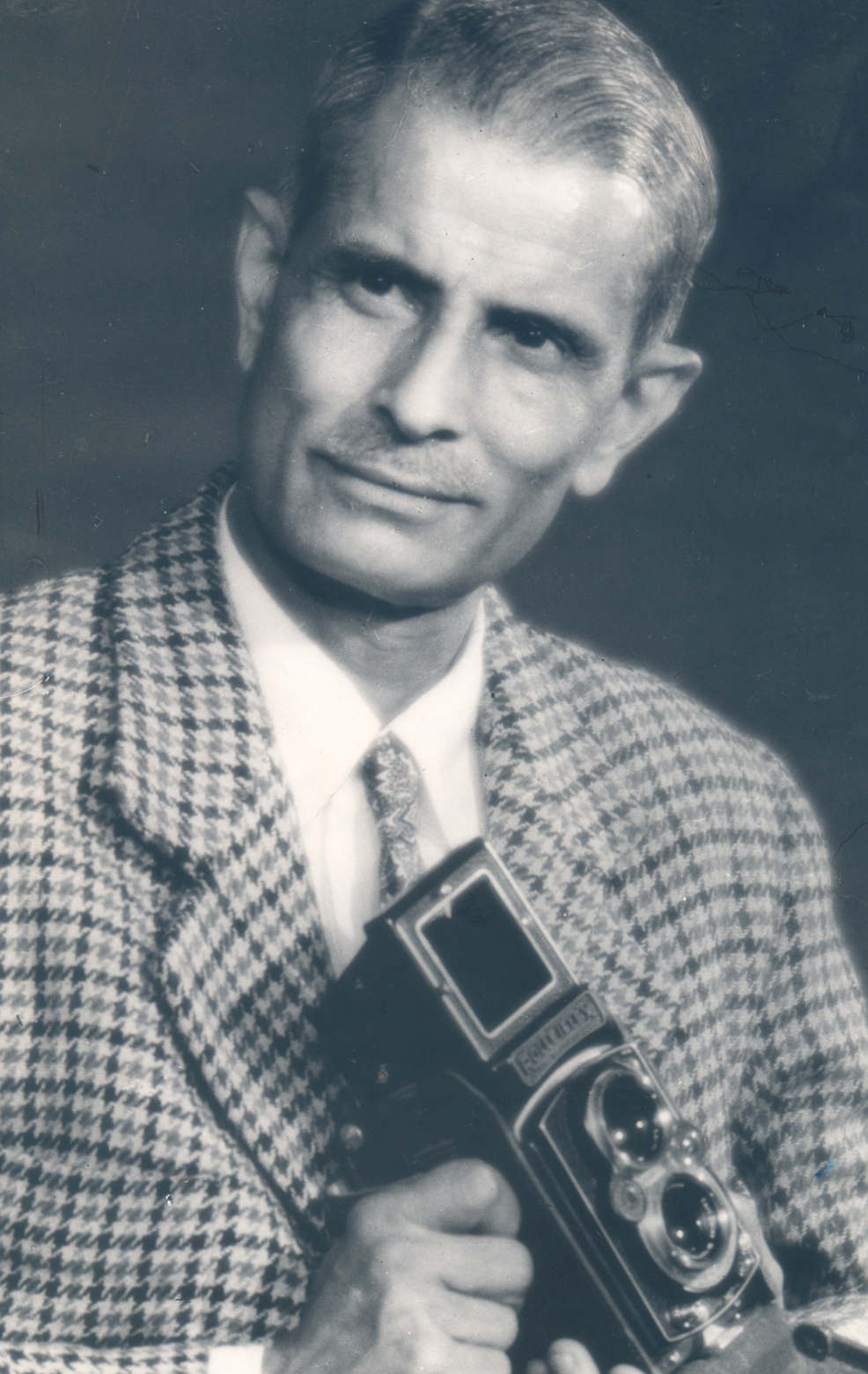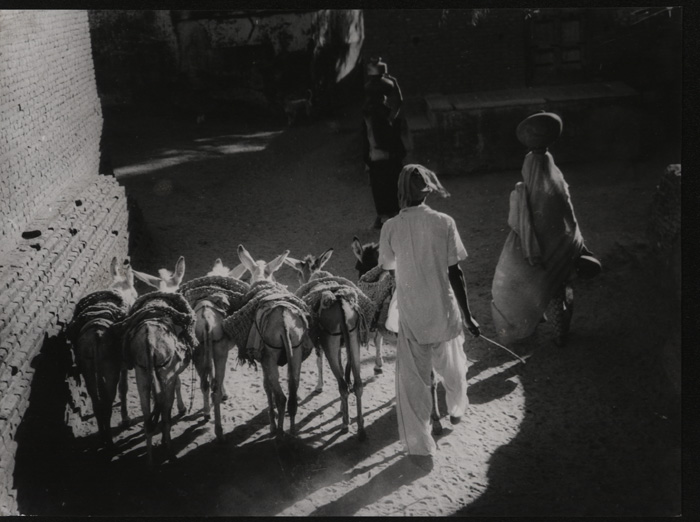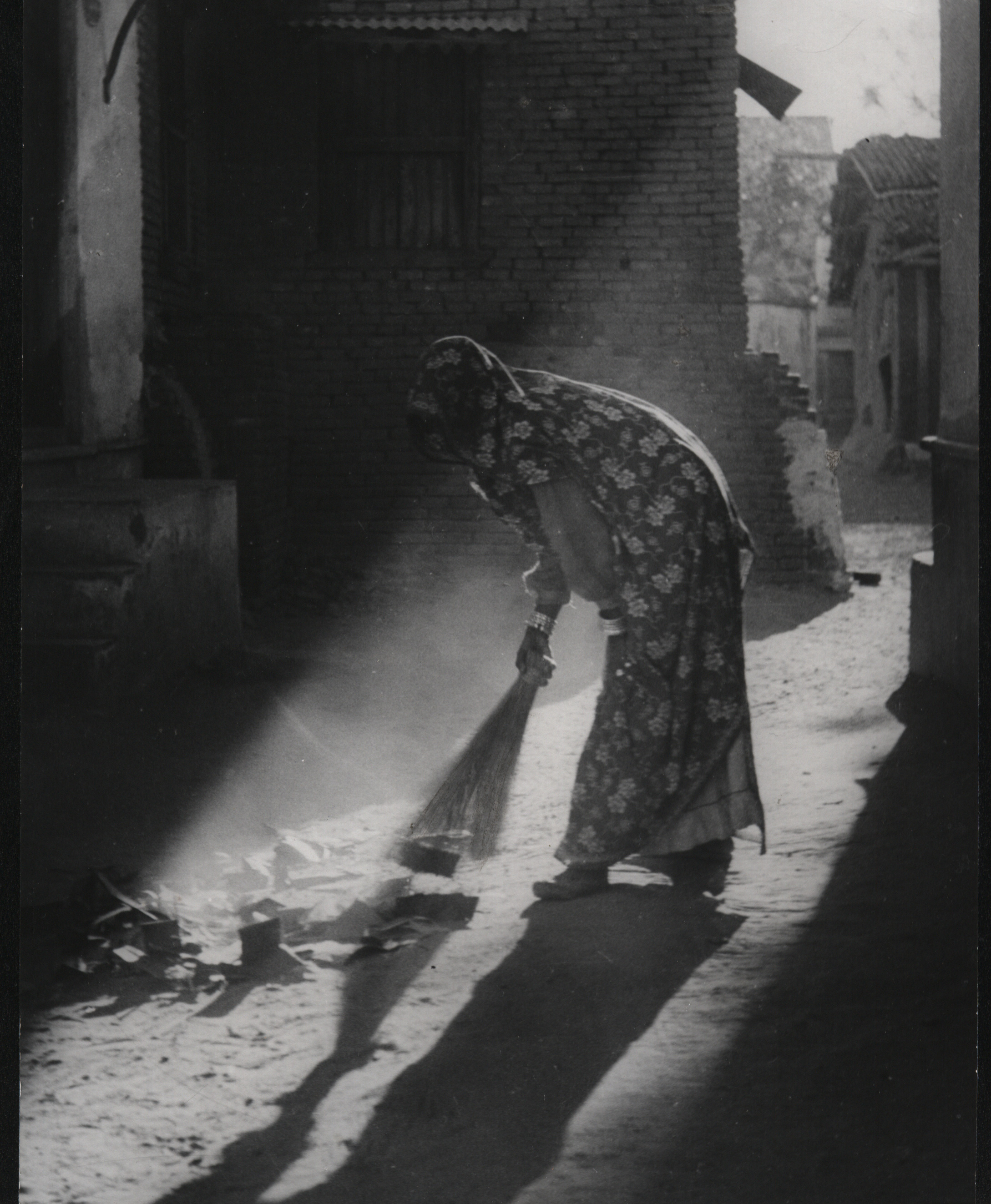Vernawada, Palanpur, GUJARAT :
| In a career spanning 70 years, A.L. Syed became one of the important figures of 20th-century Indian photography. Working in black and white, his apparently neutral stance conceals a deeply compassionate vision of human existence, says HAVOVI ANKLESARIA. |
THIS collection of 93 masterly duotone photographs by Abid Mian Lal Mian Syed is a tribute to the man and a selection of his work. In a career that spanned 70 years, he was perhaps one of the most important figures in the world of 20th-century Indian photography. Born in 1904, Syed spent his childhood in Palanpur where he and his brother became the official photographers of Palanpur State and much of their professional work was done for the royal families of various North Indian States.
In 1923 Syed won first prize in The Illustrated Weekly of India Photo Contest for his photograph of the sunrise at Chowpatty, unfortunately not included in this selection. He began publishing his work in 1925 and towards the end of his life claimed to have been published in every Indian magazine. In 1935, he won the Popular Photography award for his photograph “Traveller of the East, Palanpur” and, with it, instant international recognition.
For generations of viewers overwhelmed by colour, the black and white image is the medium of the master-craftsman and Syed does not disappoint. His eye is impeccable. These are wonderfully evocative photographs sans colour but with varying intensities of light and shadow. O.P. Sharma’s Foreword is slightly overburdened with accolades, but he does a good job of introducing his subject. Syed’s range was vast — from portraits of the rich and powerful to day-to-day village scenes. Much of the attraction of the photographs is the strong emphasis on line and form, particularly the section on his historical buildings and religious monuments. Like many of his generation, he was a keen hunter, but in this collection there are no trophies, only living birds and animals.
The book begins with a series of portraits of the royal families of Northern India in their resplendent gear. Most of the portraits are taken in isolation. The fixed frontal alignment, the expression of supreme assurance from individuals who know their social and political identity, symbolise a way of life and attitudes that are somewhat diminished in contemporary India. The portraits are nonetheless important as a part of the national archive. The first photograph is a long shot of a very young Gayatri Devi of Jaipur seated in a dark room. Her freshness and youth contrasts sharply with the antique grandeur of her surroundings and accentuates the loneliness of her surroundings.
Syed was obsessed with the desert, which penetrated his consciousness almost totally. The desert as star recalls the haunting scenes in the film “Lawrence of Arabia”, though Syed’s photographs predate the film by several decades. Most of his outdoor photographs have a feel of desolation. Even relatively busy scenes evoke a sense of vastness. One of the great classics of this collection and possibly in the history of photography is “Different Climb, Jaisalmer” in which a camel is being drawn up a sand dune. The camel and the man are not in prominent focus. What is emphasised is the sharp angle of the dune’s gradient, evoking the terror and seductiveness of this featureless terrain.
In “Desert Child”, child and lamb pose in front of the camera unselfconsciously. Innocence declares itself without surrendering to the “cutesy bunny” manipulations traditionally associated with photographs of children and animals. Their vulnerability is brought into focus in the context of a remorseless desert existence.
Perhaps one of the most extraordinary photographs in this collection is “Risky Balance” showing a man perched on a rope on one leg with a donkey strapped to his back. The upward tilt of the camera captures the perfect equipoise of the acrobat featured against a dull grey sky. But it is not simply the showmanship that amazes. The image resonates with a sense of perilous uncertainty of living on the edge with no guarantees and of having to depend on skills whose rewards are irregular. Indeed the title is ironic in a way that Syed may not have intended.
In 1971 Syed developed Parkinson’s disease, but continued to work. He died in 1991. Towards the end of his life, he was critical of contemporary Indian photographers and photo-journalists for parading the spectacle of poverty and human misery to satisfy the international market. Syed’s camera was not an instrument of authorship. There is nothing of the vicarious or the gratuitous in these pictures. The frame is a medium of documentation whose artistry is concerned with the simple, direct act of viewing. His apparently neutral stance conceals a deeply compassionate vision of human existence as one of isolation, loneliness and incompatibility.
Visions from the Inner Eye: Photographic Art of A.L. Syed, Introduction by O.P. Sharma, Mapin Publishing Pvt. Ltd., p.111, Rs. 1000.
source: http://www.thehindu.com / The Hindu, Online Edition / Home> Literary Review / January 06th, 2002











